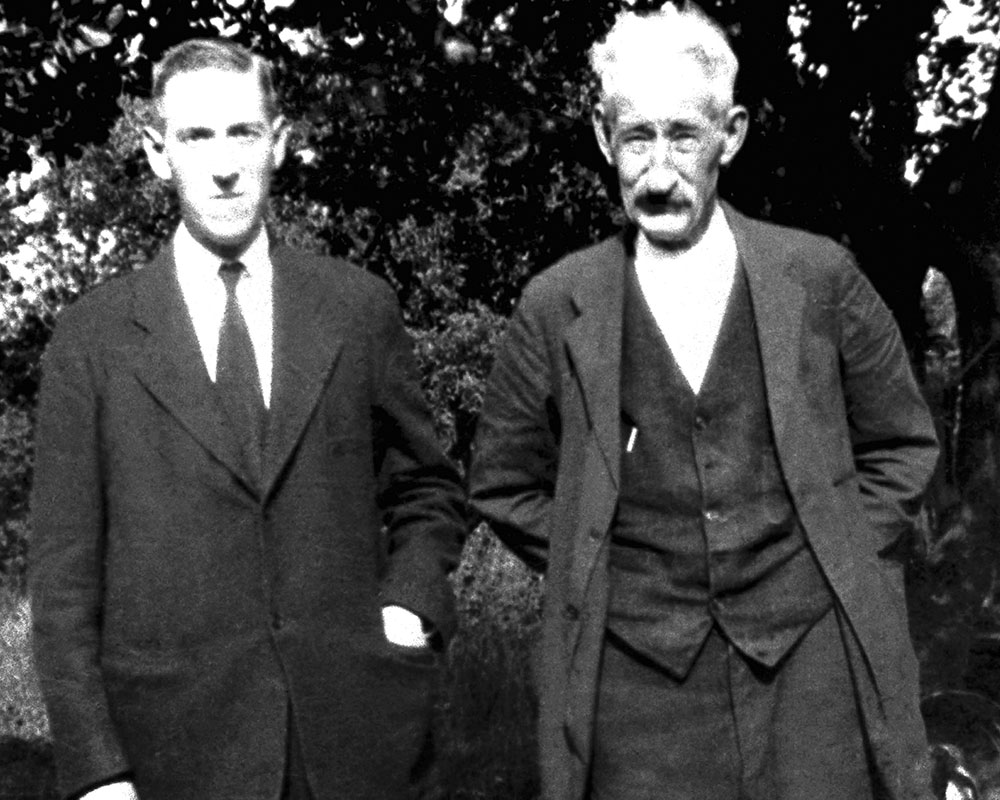Horror writer H. P. Lovecraft was on hand locally to view the total solar eclipse of Aug. 31, 1932.
Lovecraft, who spent time in Haverhill during the 1930s because of his contributions to the Haverhill-based amateur journalism publication, “The Tryout,” met amateur pressman W. Paul Cook in Boston. The next day, they headed to Newburyport to view the solar eclipse. Lovecraft had been fascinated by astronomy from an early age. His first published work (other than letters to editors) was a series of astronomy articles in the Pawtuxet Valley Gleaner newspaper in 1906.
When he learned that a total eclipse would be visible in parts of Massachusetts, New Hampshire and Maine, he did not hesitate. He knew the crowds would flock to the line of maximum duration in New Hampshire and Maine, but he was content to avoid the masses and to see his second eclipse by choosing a slightly shorter duration, as he explained to poetess Elizabeth Toldridge.
“It really matters relatively little whether an amateur sees the totality for half a minute, or for a minute & a half, so long as he does see it. Even a momentary flash gives the full benefit of the corona. In 1925 (when I was in New York) some of us tramped up into the cold of northern Yonkers to see the January eclipse, but [Frank Belknap] Long (judging from his description) seems to have seen about as much from the roof of his apartment house in 100th St.”
Cook and Lovecraft stopped for a brief visit at Groveland Street in Haverhill. Amateur journalism legend Charles W “Tryout” Smith was, as always, invited to accompany them. As usual, Smith declined, planning to see the eclipse from Haverhill, where it would last only two seconds or so.
Lovecraft and Cook arrived in Newburyport on Aug. 31. Lovecraft’s previous explorations of Newburyport clued him as to the ideal spot at which to witness the eclipse—the open spaces of Atkinson Common. This landmark, between Merrimack and High streets in the northern part of town, was founded in 1873 and consisted of winding paths along 21 acres of landscaped lawns around a lily pond.
At 3:22 p.m., Lovecraft and Cook witnessed the beginning of the rare total eclipse of the sun. His description in a letter to museum curator James F. Morton in New Jersey, with a similar text sent to author Robert E. Howard (creator of Conan the Barbararian), on Sept. 3 was not astronomically precise, but it was pure Lovecraft:
“The aspect of the landskip did not change in tone until the solar crescent was rather small, and then a kind of sunset vividness became apparent. When the crescent waned to extreme thinness, the scene grew strange and spectral—an almost deathlike quality inhering in the sickly yellowish light. Just about that time the sun went under a cloud, and our expedition commenced cursing in 33-1/3 different languages including Ido. At last, though, the thin thread of the pre-totality glitter emerged into a large patch of absolutely clear sky. The outspread valleys faded into unnatural night—Jupiter came out in the deep-violet heavens—ghoulish shadow-bands raced along the winding white clouds—the last beaded strip of glitter vanished—and the pale corona flicker’d into aureolar radiance around the black disc of the obscuring moon.
Lovecraft was not alone in his belief of the Common being an ideal location for sightseeing: several years after his visit, an observation tower was erected in the park.
David Goudsward, raised on the summit of Scotland Hill, Haverhill, brings his New England sensibilities and respect for historical perspective his work. Although living in Florida, his bibliography consists primarily of New England topics. He is the author of “H. P. Lovecraft in the Merrimack Valley.”
See All Goudsward Books on Amazon

